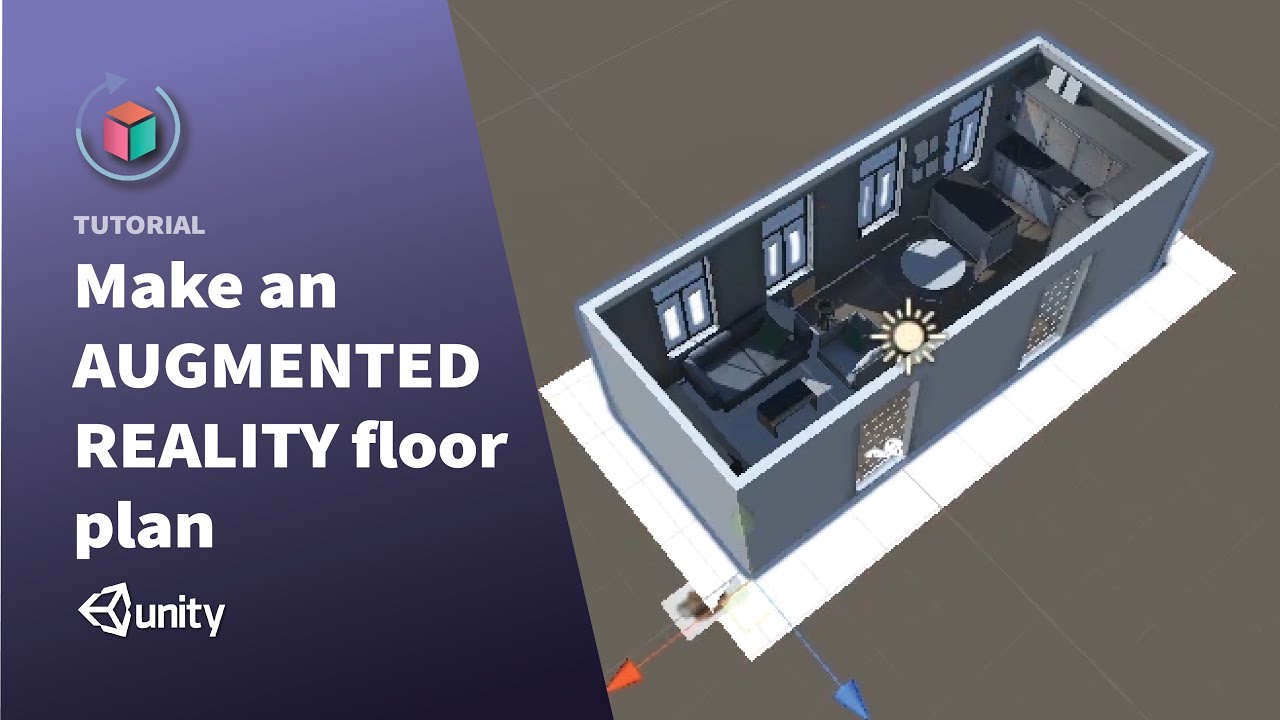Augmented Reality In Architecture - Enhancing Design And Visualization
Augmented reality in architecture has come a long way in a short amount of time and has changed many industries. Architecture is one such industry that has embraced augmented reality (AR) technology to enhance the design process, visualization, and collaboration between architects, clients, and contractors.
Author:George EvansApr 12, 2023139 Shares138.9K Views

Augmented reality in architecturehas been rapidly advancing over the years and has revolutionized several industries.
Architecture is one such industry that has embraced augmented reality (AR) technology to enhance the design process, visualization, and collaboration between architects, clients, and contractors.
AR technology is transforming the way architects design and present their projects, enabling them to create immersive and interactive experiences for clients and stakeholders.
In this article, we will explore the concept of Augmented Reality in architecture, its benefits, and its applications in the industry.
What Is Augmented Reality?
Augmented Reality, or AR, is a technology that overlays digital information onto the physical world. It can enhance the user's experience by providing a more interactive and immersive environment, and has become increasingly popular in various industries, including architecture.
In the context of architecture, AR technology can be used to visualize and manipulate 3D models of buildings in real time.
Architects and designers can use AR tools to create interactive presentations that allow clients to see and experience their designs in a realistic way, even before the construction process begins.
This technology has revolutionized the way architects and designers communicate their ideas and collaborate with clients and other stakeholders.
AR technology can also be used during the construction phase to assist workers with tasks such as measuring and laying out components, making the construction process more accurate and efficient.
This can lead to cost savings and fewer errors, ultimately resulting in a better end product.
As AR technology continues to evolve, it is expected to have an even greater impact on the architecture industry, providing new and innovative ways to design, construct, and experience buildings.
Augmented Reality In Architecture
AR technology is becoming increasingly popular in architecture, as it allows architects to visualize their designs in 3D and to see how they will look in real-world settings.
AR tools can be used to create digital models of buildings, which can be overlaid onto the physical environment, allowing architects to see how their designs will fit into the existing space.
This technology also allows architects to make real-time changes to their designs and see how these changes will affect the final product.
AR is also being used to enhance the visualization of construction plans. With AR tools, architects can create interactive models that can be viewed from different angles and can be scaled to the size of the space.
This allows architects to see how different design elements will look in the actual space and to make changes before construction begins.

Augmented Reality for ARCHITECTS
Benefits Of Augmented Reality In Architecture
Enhanced Visualization
One of the primary benefits of AR in architecture is the enhanced visualization it provides.
Architects can view their designs in 3D and overlay them onto the real world, allowing them to see how the building will look and interact with its surroundings. This makes it easier to identify design flaws and make changes before construction begins.
Improved Collaboration
AR in architecture also enhances collaboration between architects, clients, and contractors.
By using AR, all stakeholders can view the same 3D model in real-time, making it easier to communicate and make decisions.
This can help to reduce errors and improve the overall efficiency of the design and construction process.
Cost Reduction
Another benefit of AR in architecture is cost reduction. By using AR, architects can identify design flaws and make changes before construction begins, reducing the risk of costly mistakes.
Additionally, AR can be used to simulate the building's energy performance and identify areas where energy efficiency can be improved, helping to reduce operational costs over the building's lifetime.
Applications Of Augmented Reality In Architecture
Design Visualization
AR can be used to create immersive visualizations of building designs, allowing architects and clients to experience the building before it is built. This can help to identify design flaws and make changes before construction begins.
On-Site Construction
AR can be used on-site during construction to help workers visualize the building design and ensure that everything is being built according to the plans.
This can help to reduce errors and ensure that the building is constructed to the highest quality standards.
Building Maintenance And Operations
AR can be used for building maintenance and operations, allowing workers to view building systems and components in real-time.
This can help to identify potential problems before they become major issues and improve overall efficiency.
Challenges Of Augmented Reality In Architecture
Cost
One of the main challenges of AR in architecture is cost. AR technology can be expensive, and many firms may not have the budget to invest in it.
Technical Limitations
AR technology is still in its early stages, and there are technical limitations that need to be addressed.
For example, the accuracy of AR models may be affected by lighting conditions, and the technology may not work well in outdoor environments.
Integration
AR technology needs to be integrated with existing software and tools used in the architecture industry.
This can be a challenge, as many software programs are proprietary and not compatible with other systems.
Examples Of Augmented Reality In Architecture
Augmented Reality (AR) technology is revolutionizing the way architects design and present their projects. Here are some examples of how augmented reality is used in architecture:
Visualization
AR allows architects to visualize their designs in real-time and in a real-world context. For example, using AR, architects can project their designs onto a physical model or a building site, allowing them to see how the design will look in the actual environment.
Collaboration
AR can facilitate collaboration between architects, engineers, and other stakeholders in a project. By using AR, team members can view the same model and make changes in real-time, eliminating the need for back-and-forth communication and increasing efficiency.
Marketing
AR can be used in marketing and advertising to showcase building designs to potential clients. For example, a real estate company can use AR to allow customers to see a 3D model of a building on their smartphone, giving them a better sense of the space and design.
Training
AR can be used in architectural training to help students learn and practice design skills. For example, using AR, students can practice creating 3D models of buildings and see how they would look in a real-world context.
Maintenance
AR can be used in building maintenance to help identify and fix problems. For example, maintenance workers can use AR to overlay building schematics onto the actual building, making it easier to identify the location of a problem and fix it quickly.
These are just a few examples of how augmented reality is being used in architecture. As the technology continues to evolve, we can expect to see even more innovative uses of AR in the field of architecture.
People Also Ask
How Is Augmented Reality Used In Architecture?
Augmented reality is used in architecture to visualize designs in a more interactive and immersive way. Architects can use AR to overlay virtual models of buildings onto real-world environments, allowing them to see how the design will look and interact with its surroundings.
What Are The Benefits Of Using Augmented Reality In Architecture?
Some benefits of using augmented reality in architecture include improved visualization of designs, increased efficiency in the design process, enhanced communication with clients, and a better understanding of how the design will fit into its real-world environment.
What Software Is Used For Augmented Reality In Architecture?
There are a variety of software programs that can be used for augmented reality in architecture, including ARki, SketchAR, and ARToolKit. These programs allow architects to create and visualize 3D models of their designs in augmented reality.
How Does Augmented Reality Affect The Construction Process In Architecture?
Augmented reality can help to improve the construction process in architecture by allowing workers to see the design in 3D and understand how it fits into its real-world environment. This can help to minimize errors and improve efficiency during the construction process.
What Is The Future Of Augmented Reality In Architecture?
The future of augmented reality in architecture is promising, with continued advancements in technology and increased adoption of AR in the industry. AR has the potential to revolutionize the way architects design and visualize buildings, making the process more interactive, efficient, and engaging.
Final Thought
Augmented reality in architecture is changing the way architects and designers approach the design process. With the ability to visualize and manipulate 3D models in real-world environments,
AR technology is improving the accuracy and efficiency of architectural design. It is also enhancing the collaboration between architects, clients, and other stakeholders by providing a shared visual understanding of the project.
As AR technology continues to advance, we can expect it to become an even more integral part of the architecture industry.
From conceptualization to construction, augmented reality is proving to be a valuable tool for architects looking to enhance their design processes and create more innovative and sustainable structures.

George Evans
Author
George Anderson, an exceptional architectural designer, envisions and brings to life structures that transcend the realm of imagination. With an unwavering passion for design and an innate eye for detail, George seamlessly blends form and function, creating immersive spaces that inspire awe.
Driven by a deep appreciation for the interplay of space, light, and materials, George's innovative approach redefines the possibilities of architectural design. His visionary compositions leave an indelible mark, evoking a sense of wonder and transforming the built environment.
George Anderson's transformative designs and unwavering dedication continue to shape the architectural landscape, pushing the boundaries of what is possible and inspiring generations to come.
Latest Articles
Popular Articles